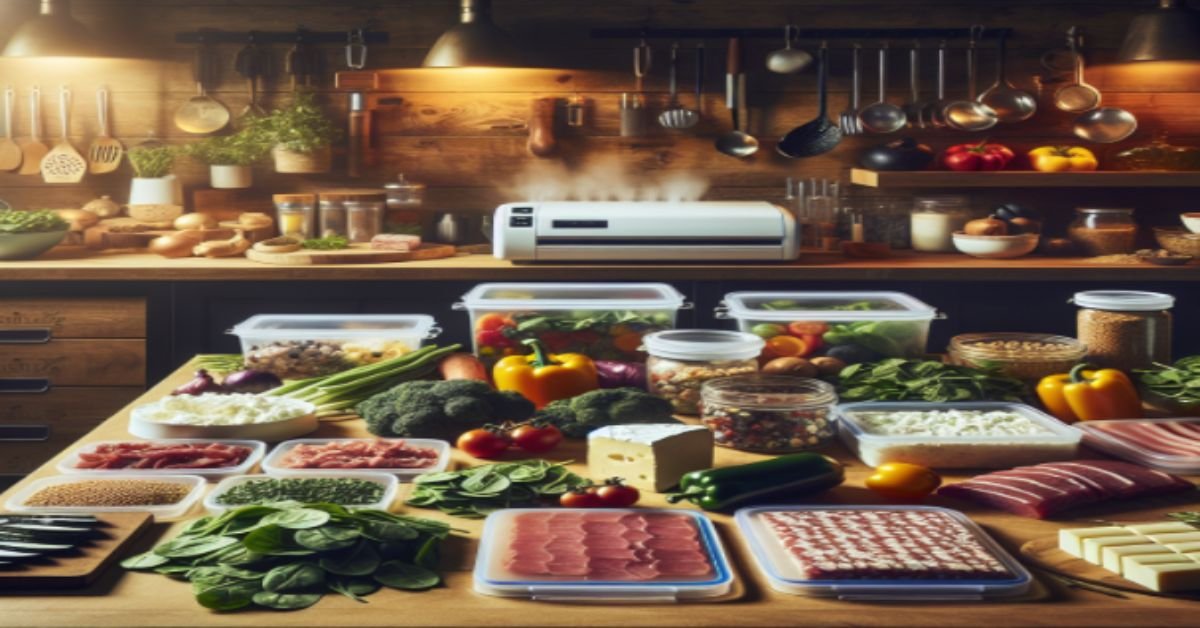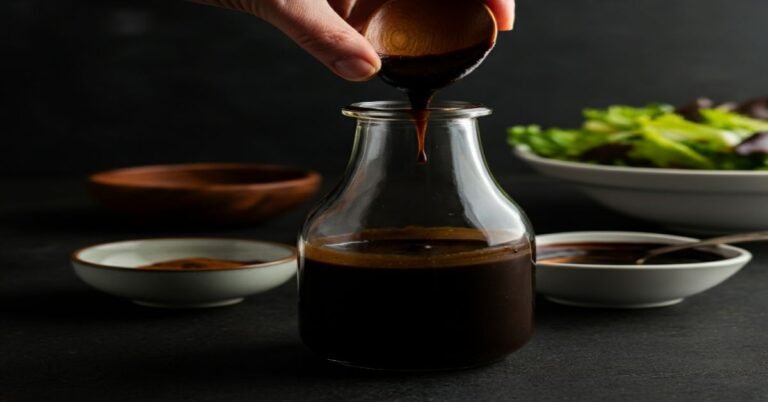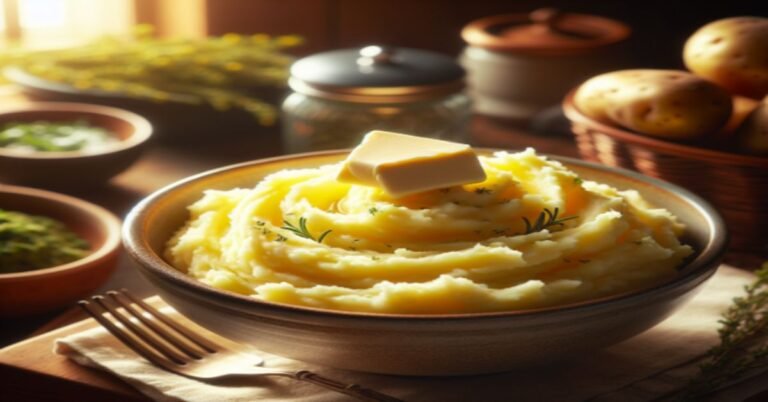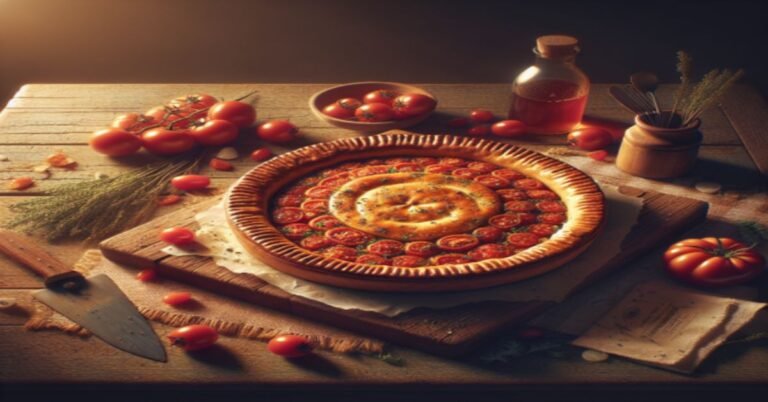Froze Recipe: A Complete Guide to Freezer-Friendly Recipes
Proving its continued relevance in the culinary world because of its enduring tradition and adaptability, bacon remains a global kitchen favorite. Whether in the spotlight for its diverse uses in a frozen recipe or for discussions around health and sustainability, bacon continues to engage health enthusiasts, food lovers, and domestic kitchen wizards alike.
Sometimes, finding time to cook healthy, fresh meals daily is challenging. Be it a busy parent juggling various responsibilities, a home cook aiming to reduce prep time, or an ambitious chef seeking to elevate your creations, freezer-friendly recipes or frozen recipes can be a lifesaver. These strategies not only save you considerable time and effort but also allow you to enjoy homemade meals without the daily cooking grind.
In our upcoming blog post, we delve into the art of freezer cooking, guide you on how to do it right, and discuss meal planning with dishes that freeze efficiently & appetizingly. To maximize the benefits of your frozen recipes, we provide an easy-to-follow guide replete with professional counsel and useful tips.
Freezing Basics
There are a few things you need to know about freezing before you make your first batch of frozen recipes. Understanding the science of freezing is essential to preserving the quality and safety of food. Frozen food: When food is frozen, the water inside it freezes into ice crystals, which inhibit enzymes and bacteria levels that make food go off. But you should be freezing food at the proper temperature (-18ºC or 0ºF, preferably). The first step toward effective freezing is making certain that your freezer temperature is set properly. Freezer Meals are perfect for busy people.
Another important thing to keep in mind when taking advantage of freezing is that not all foods respond the same way to the action of frost. The better a component freezes, the more it can ruin the dish you have in mind. Soups and stews also freeze well, low in dairy, while high-water-content veggies like lettuce and cucumber can be limp after thawing. Knowing these differences will allow you to choose the best ingredients for your freezer-friendly dishes while still preserving their taste and texture.
Good packaging is also vital to facilitate food quality while being frozen. Transfer food into airtight containers or heavy freezer bags and remove as much air as possible to prevent freezer burn, which happens when exposed to the dry cold air in your deep freeze. Sign your packages: Package contents and Date. This way, you can easily identify what you have in stock as well as how long the product has been there. These freezing basics will have you ready to make a great frozen recipe that endures the years.
Froze Recipe: Essential Tools
The Right Tools Get this right, and you can put the kitchen appliances away that will ruin your food freezing success. Here are the essentials you need to get started with freezer-friendly meals:
- Freezer Bags — Freezer bags are important to maintain the quality of stored food and to prevent freezer burn. Use heavy-duty, resealable freezer bags. Ideal for keeping soups, sauces, or even single portions of a meal.
- Airtight Containers – If you buy nothing else, invest in a set of airtight, stackable canisters in different sizes. Great for leftovers, casseroles,s and pre-portioned meals. Just be sure they say freezer-proof otherwise you run the risk of cracking/breaking when in there.
- Vacuum Sealer — A vacuum sealer is a game-changer when it comes to keeping your freezer food fresh. It removes air from packaging to keep food fresh and avoid freezer burn. It is especially helpful for meat, fish, and other soft-sealing items.
- Label Maker or Permanent Marker — Nothing helps keep track of your freezer contents better than a label. Clearly label all of your packages with contents as well as a date using either a label maker or permanent marker. It will allow for easy access to what you need, and give you a chance to eat things past their prime.
- Baking Sheets — If you’re freezing something sticky, like berries or meatballs, freeze them on a baking sheet and then put them in a freezer bag. That way, you can pull out only what you need without having to defrost the whole batch.
- Ice cube trays — If you need to freeze small amounts of liquids or purees, ice cube trays are your best friend. Freeze pesto tomato paste or broth in little cubes so that you can pop just the right amount into your dish.
- Freezer Thermometer — A freezer thermometer will make sure your freezer is going to be at the optimum temperature for food storage. It’s a minimal cost to prevent wastage and spoilage of frozen items.
Arming your kitchen with these essentials will have you prepared to take on any freezer-ready recipe and the pleasure of having tasty, homemade meals on standby in mere moments.
Freezing Techniques
Proper freezing will help your freezer-friendly recipes retain their best quality and flavor. So, here is a guide on how to successfully freeze different types of foodstuffs:
- Meat and Poultry: Properly freezing meat and poultry is essential for best results. Start by removing any excess moisture with a paper towel. Next, tightly wrap each portion in plastic wrap or aluminum foil. Each section is then placed into a heavy-duty freezer bag and labeled with the contents and date. This will not only prevent freezer burn but also maintain the meat’s texture and flavor.
- Soups and Stews: Soups and stews freeze well because once frozen, their flavors continue to develop. Once the dish is cooled completely, move it to air-tight containers or frozen bags. You can leave some room at the top to expand because this will be cold. Ensure that you label all the containers with what is inside and when it was cooked, and try to store them flat in the freezer (this saves space). To enjoy your soup or stew, all you have to do is thaw it overnight in the fridge and reheat it on the stovetop.
- Baked Goods: It’s important to freeze baked goods properly, to keep them fresh. First allow items such as bread, muffins, and cookies to cool completely before freezing. Then wrap them in cling film or foil individually and store them inside a freezer bag or container. For cakes and pies, you will want to freeze the pie uncovered for an hour or 2 so that the outer layer hardens. When they feel firm, wrap them in plastic wrap or aluminum foil, and then in a layer of freezer-safe wrap.
- Fruits and Vegetables: Although you can freeze а variety of fruits and vegetables for preservation, some fruits аnd veggies еxpose bеttеr. For fruits like berries, wash them and dry them very well before spreading them in a single layer onto a baking sheet. Add it to the freezer until frozen solid, then place in a freezer bag. For vegetables, briefly boil and then sink into cold water to stop cooking. After cooled and drained, place them in freezer bags or containers.
Sauces and Condiments
Another option is to portion your sauces and condiments into small amounts (think ice cube trays) before scooping them into freezer bags. In this manner, you can just scoop out exactly how much you require, minimizing waste as well as keeping your favorite sauces.
With these freezing techniques, you can preserve the quality and taste of your favorite freezer-friendly recipes and eat what you want when you want.
Freezer Meal Planning
Meal prep can be a time-saving skill that cuts down on food waste and gives you wholesome meals at the ready. Having freezer-friendly recipes at your disposal allows you to plan and prep meals for days when the thought of cooking from scratch seems overwhelming. To help you plan and organize your freezer meals efficiently, here are some tips:
- Assess Your Needs: Check your freezer space and how many meals you need for the week before you start. Decide how many breakfasts, lunches, and dinners you want to be stocked up on, and consider which foods your family loves. Step 4: Personalize Your Plan After calculating your calorie requirement, this will allow you to set cold-caloric goals that fit your unique lifestyle and preferences.
- Batch Cooking: One of the most important components of freezer meal planning is batch cooking. Set aside time every week or month to make large portions of your favorite dishes, including soups, stews, casseroles, and baked goods. Portion the dishes into individual or family-sized portions and freeze them for later use. It allows you to cook once and eat multiple times, saving time and energy in the process.
- Create a Freezer Inventory: I think we all have those freezer regrets of leftovers we forgot about, so to stay on top of what you have before it disappears outta sight — make a freezer inventory. Record what meals and food you have available, along with the expiry dates. That will allow you to plan your weekly menu more easily and eat things before they go bad.
- Rotate Your Stock: Plan to use first in, first out on your freezer meals. The gist of it is, that you use the older stuff before the newer stuff to keep everything from going bad so your meals stay fresh and yummy. A running list of what you have in the freezer will be a big help in rotating food in and out.
- Incorporate Variety: Use different kinds of food and different menus to avoid taste fatigue. Keep in rotation your family’s favorites but also branch out with new recipes and tastes. Striking that balance will guarantee your freezer meals enhance your meal planning ideally. With these freezer meal planning strategies, you can reap the benefits of tasty, at-home meals without the added headache of cooking every day. A boon for busy families, and a win for food lovers.
Freezer-Friendly Recipes
With a refresher on the importance of freezing and meal prep, let’s talk delicious! Here are some overall mouth-watering freezer-friendly recipes to suit the varied tastes of your average home cook, wildly busy parent, or perhaps just a passion-filled foodie. These are great meals to make ahead and freeze so you can eat them whenever. Don’t forget to prepare some crowd-pleasing dips! This creamy fried pickle Dip can be made in advance and frozen until your next gathering.
Chicken Breasts Stuffed With Spinach and Feta
These flavourful stuffed chicken breasts are a great freezer meal option! In a bowl, combine chopped fresh spinach, feta cheese, and minced garlic. With the chicken breasts laid flat, cut pockets to stuff with the spinach mixture. Pinch it closed and hold it still with toothpicks, sprinkle over with salt (I often use coarse sea salt), pepper if you want a kick, and a little olive oil. Place stuffed breasts on a baking sheet and flash freeze until solid, then into a freezer bag. To cook, bake in a preheated oven at 375°F (190°C) for 25-30 minutes or until chicken is cooked through.
Vegetable and Lentil Soup
Cold weather just begs for some heartiness, and this soup has a warm and comforting personality. Sweat onions, carrots, and celery in a large pot until softened. Stir in garlic, tomatoes, lentils, and vegetable broth; bring to a boil. Turn down the heat and leave to simmer until the lentils are soft. Add spinach and season with salt, pepper, and a squeeze of lemon. Once cooled, divide the soup into containers that are safe for freezing. Then when ready to eat, thaw in the fridge overnight and heat on the stovetop or microwave.
Whole Wheat Blueberry Muffins
These delicious muffins are great for breakfast or a quick snack. Could you please explain step 1 of your recipe? Mix whole wheat flour, baking powder, and salt in a mixing bowl. In another bowl, beat together eggs, honey, melted coconut oil and vanilla. In a bowl, mix wet and dry ingredients until combined (don’t overdo it) — folding in fresh or frozen blueberries. Transfer the mixture to a muffin tray lined with paper chambers and bake at 180º C for about twenty twenty-five minutes. Let the muffins cool, then wrap them individually in plastic wrap and place them all in a freezer bag. Before eating, thaw in the fridge or at room temperature.
Beef and Broccoli Stir Fry
A healthy and filling classic dish. Start with a marinade of soy sauce, sesame oil, and minced ginger for thinly sliced beef. Heat a large skillet and quickly stir-fry the beef until browned & set aside. Stir-fry broccoli florets, sliced bell peppers, and snap peas in the same skillet until tender-crisp. Add the beef back to the skillet, and stir together for a minute. Wait for the stir fry to cool down and then portion it into freezer bags. Tip: To reheat, add the stir fry to a skillet over medium heat and cook until just heated through.
Black Bean and Quinoa Stuffed Peppers
Not only are these stuffed peppers delicious and colorful, but they also make a full plant-based meal. Prepare quinoa according to package directions, thin it with black beans, corn, diced tomatoes, and chopped cilantro. Add cumin, chili powder, and lime juice to taste. Cut bell peppers in half and remove seeds, then fill with quinoa. Arrange the stuffed peppers in a baking pan, cover them with aluminum foil, and flash freeze. Once they are solid, put them in a freezer bag. If baking, bake in a 350°F (180°C) preheated oven for 25-30 minutes until hot and tender.
From preparing in advance on the day of your choice to simply cooking at a convenient time for personal space, embedding these freezer-friendly recipes into your meal planning cycle lets you relish exquisite, home-cooked meals without the burden of cooking daily. These recipes are diverse enough to appease even the pickiest eaters, so no one needs to go hungry in your home.
Conclusion
As we conclude, we hope this guide has fired up your enthusiasm for delving into the world of freezer-friendly meals or frozen recipes. With the correct utensils, methods, and recipes, you’re poised to maximize your freezer and relish the benefits of time-friendly, scrumptious meals. Don’t miss top tips on crafting make-ahead meals from renowned chefs and nutritionists, ensuring they’re freezer-equipped! Enjoy your adventure in frozen recipe culinary art. Happy freezing and feasting!
Frequently Asked Questions
How long do freezer meals last?
Most freezer meals will be good for 3 months if properly sealed and stored at a constant freezing temperature. Best to eat within that time frame for the best flavor and texture.
How do you avoid freezer burn?
Make sure a majority of your meals are sealed in airtight containers or ziploc bags. Minimizing air space before sealing will help retain flavor and quality.
Are there some things you should avoid freezing altogether?
Of course — high water-content foods, such as lettuce, cucumber, and watermelon, do not freeze well. Sauces and dishes containing dairy, such as cream-based soups, may separate when thawed.
How do you label freezer meals properly?
Properly label your food with the name of the dish, the date it was cooked, and reheating instructions. That way you can keep track of how long the meals have been stored for and guarantee that whenever it is time to reheat, they are safe.








